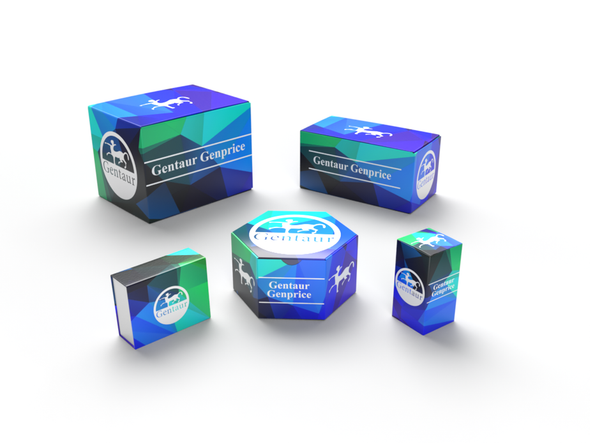749
Rat Prostaglandin H2 (PGH2) ELISA Kit | KTE100477
- SKU:
- 749-KTE100477
- Availability:
- Usually ships in 5 working days
Description
Rat Prostaglandin H2 (PGH2) ELISA Kit | KTE100477 | Gentaur UK, US & Europe Distribution
Application: This Rat Prostaglandin H2 (PGH2) ELISA Kit employs a two-site sandwich ELISA to quantitate PGH2 in samples. An antibody specific for PGH2 has been pre-coated onto a microplate. Standards and samples are pipetted into the wells and anyPGH2 present is bound by the immobilized antibody. After removing any unbound substances, a biotin-conjugated antibody specific for PGH2 is added to the wells. After washing, Streptavidin conjugated Horseradish Peroxidase (HRP) is added to the wells. Following a wash to remove any unbound avidin-enzyme reagent, a substrate solution is added to the wells and color develops in proportion to the amount of PGH2 bound in the initial step. The color development is stopped and the intensity of the color is measured.
Detection Method: Colorimetric
Conjugate: N/A
Sample Type: Cell culture supernatants#Serum#Plasma#Other biological fluids
Assay Type: Multiple steps standard sandwich ELISA assay with a working time of 3-5 hours. It depends on the experience of the operation person.
Kit Component: • Rat Prostaglandin H2 microplate
• Rat Prostaglandin H2 standard
• Rat Prostaglandin H2 detect antibody
• Streptavidin-HRP
• Standard diluent
• Assay buffer
• HRP substrate
• Stop solution
• Wash buffer
• Plate covers
Features & Benefits: Rat Prostaglandin H2 (PGH2) ELISA Kit has high sensitivity and excellent specificity for detection of Rat PGH2. No significant cross-reactivity or interference between Rat PGH2 and analogues was observed.
Calibration Range: Please inquire
Limit Of Detection: Please inquire
Usage Note: • Do not mix components from different kit lots or use reagents beyond the kit expiration date.
• Allow all reagents to warm to room temperature for at least 30 minutes before opening.
• Pre-rinse the pipet tip with reagent, use fresh pipet tips for each sample, standard and reagent to avoid contamination.
• Unused wells must be kept desiccated at 4 °C in the sealed bag provided.
• Mix Thoroughly is very important for the result. It is recommended using low frequency oscillator or slight hand shaking every 10 minutes.
• It is recommended that all samples and standards be assayed in duplicate or triplicate.
Storage Instruction: The unopened kit should be stored at 2 - 8°C. After opening, please store refer to protocols.
Shipping: Gel pack with blue ice.
Precaution The product listed herein is for research use only and is not intended for use in human or clinical diagnosis. Suggested applications of our products are not recommendations to use our products in violation of any patent or as a license. We cannot be responsible for patent infringements or other violations that may occur with the use of this product.
Background: Prostaglandin H2 is a type of Prostaglandin which is derived from arachidonic acid and is a precursor for many other biologically. Prostaglandins are members of a group of lipid compounds that are derived enzymatically from essential fatty acids (EFAs) and have important functions in the animal body. Every prostaglandin contains 20 carbon atoms, including a 5-carbon ring. Prostaglandin name derives from the prostate gland. When prostaglandins were first isolated from seminal fluid in 1935 by the Swedish physiologist Ulf von Euler and independently by M.W. Goldblatt, it was believed to be part of the prostatic secretions. Later it was shown that many other tissues secrete prostaglandins for various functions. In 1971, it was determined that aspirin-like drugs could inhibit the synthesis of prostaglandins.
Alternative Names: PGH2
Search name: PGH2
Tag: PGH2






